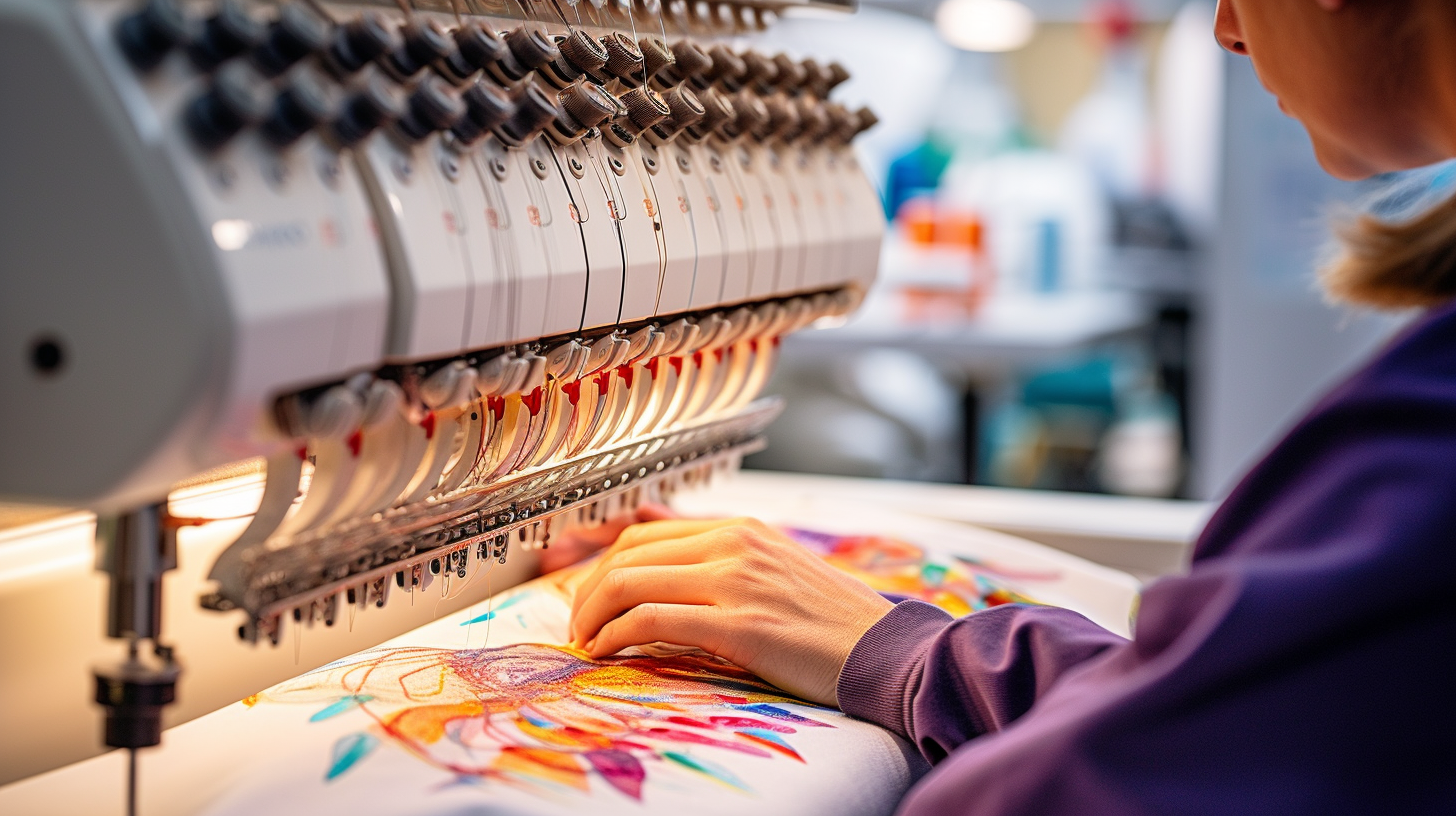Comprehensive Digitizing for Embroidery: From Layout to Stitch
Comprehensive Digitizing for Embroidery: From Layout to Stitch
Blog Article
Streamlining the Art of Embroidery Digitizing: Step-by-Step Overview
Embroidery digitizing is a meticulous craft that demands accuracy and imagination. As technology continues to development, the digitization process has become more accessible, enabling lovers to bring their detailed designs to life with convenience. In this overview, we will decipher the intricacies of needlework digitizing, breaking down each step methodically to streamline the process and empower both beginners and skilled embroiderers alike. Stay tuned to uncover how you can streamline this elaborate art form and change your creative visions right into magnificently embroidered work of arts.
Comprehending Needlework Digitizing Software Program
Needlework digitizing software application acts as a vital device for changing complex designs right into electronic layouts suitable with needlework equipments, assisting in specific sewing and personalization. This customized software program enables customers to import different photo file formats, such as JPG or PNG, and transform them into needlework machine-readable formats like DST, EXP, or PES - Digitizing for Embroidery. By utilizing features like stitch editing, rug options, and thread shade selection, digitizing software application enables users to manage every aspect of the design procedure
In addition, progressed needlework digitizing software program provides tools for producing complex styles, readjusting stitch thickness, and incorporating elaborate information. Users can also sneak peek the style prior to stitching it out, guaranteeing accuracy and decreasing mistakes. In addition, numerous software application give automatic features that aid enhance the digitizing process, saving time and effort.
Comprehending the capabilities of embroidery digitizing software is necessary for achieving high-grade lead to needlework tasks. By grasping this device, embroidery lovers and professionals can release their creative thinking and bring elaborate styles to life with precision and efficiency.

Picking the Right Layout Data
After acquainting yourself with the abilities of embroidery digitizing software, the following critical action in the procedure is picking the appropriate layout declare your project. Digitizing for Embroidery. When choosing a design file for embroidery digitizing, it's necessary to consider the intricacy of the style, the size of the end product, and the kind of material you will certainly be working with
For detailed designs with fine details, a high-resolution image or vector data is advised to make sure that the embroidery device can precisely reproduce the design. Furthermore, the size of the end product plays a considerable role in choosing the best design file. Larger designs may call for greater resolution data to preserve clarity and intensity.
Moreover, the kind of fabric you will be embroidering on affects the selection of design file. Different fabrics might require adjustments in the layout documents to ensure that the stitches are properly aligned and the layout looks like planned. By carefully selecting the best style file based upon these aspects, you can set on your own up for an effective needlework digitizing procedure.
Digitizing Devices and Techniques
Utilizing specialized software program and precision strategies, digitizing devices are essential in changing intricate styles into embroidery-ready data. Embroidery digitizing software application, such as Wilcom, Hatch, or Embrilliance, gives the necessary system to transform artwork into stitch data. These programs offer features like stitch editing, padding choices, and lettering tools to make sure the layout equates effortlessly onto textile.
Among the vital techniques in digitizing webpage is producing a clear path for the embroidery maker to comply with. This includes digitizing each component of the style with precision, establishing stitch types, thickness, and instructions. By making use of devices like digitizing tablets or software-specific plugins, embroiderers can accomplish a high degree of accuracy in their digitized layouts.
In addition, understanding the art of rug sewing is important for generating top quality embroidery. Underlay stitching supports the fabric and produces a structure for the style, making certain that the end product is both visually appealing and durable. By recognizing these digitizing tools and methods, embroiderers can boost their craft and bring elaborate designs to life with accuracy and efficiency.
Personalizing Stitch Types and Instructions
Having actually established a structure in digitizing tools and methods, an important element in advancing needlework workmanship depends on tailoring stitch kinds and instructions with precision and function. The choice of stitch kinds can significantly affect the overall appearance and texture of the stitched layout. Satin stitches, known for their smooth and glossy coating, work well for developing borders and text. On the other hand, fill stitches are perfect for covering larger locations successfully. By purposefully combining these stitch kinds, embroiderers can achieve depth and measurement in their designs.
Moreover, the instructions of stitches plays a crucial role in enhancing the aesthetic charm of the last needlework. By trying out with various stitch angles and patterns, embroiderers can bring their layouts to life with impressive information and ins and out.
Testing and Refining Your Digitized Layout
To make certain the accuracy and high quality of your digitized design, detailed screening and refinement are essential action in the embroidery digitizing procedure. As soon as you have actually finished the digitization of your design, it is vital to evaluate check this it prior to waging the actual needlework. Testing allows you to determine any this kind of prospective problems such as string breaks, stitch density issues, or style distortions that may influence the result.

After screening, it is very important to improve your digitized style based upon the feedback from the examination sew-out. This might include tweaking stitch setups, adjusting densities, or making modifications to the total design to attain the desired result. By repeating through testing and refinement, you can adjust your digitized design to excellence before progressing with the real embroidery procedure.
Conclusion
Finally, grasping the art of needlework digitizing calls for a thorough understanding of the software program, picking the right layout documents, using digitizing devices and techniques, customizing stitch kinds and directions, and screening and refining the digitized style. By following these actions, embroiderers can streamline the digitizing procedure and create top notch embroidered designs with accuracy and performance.
Report this page